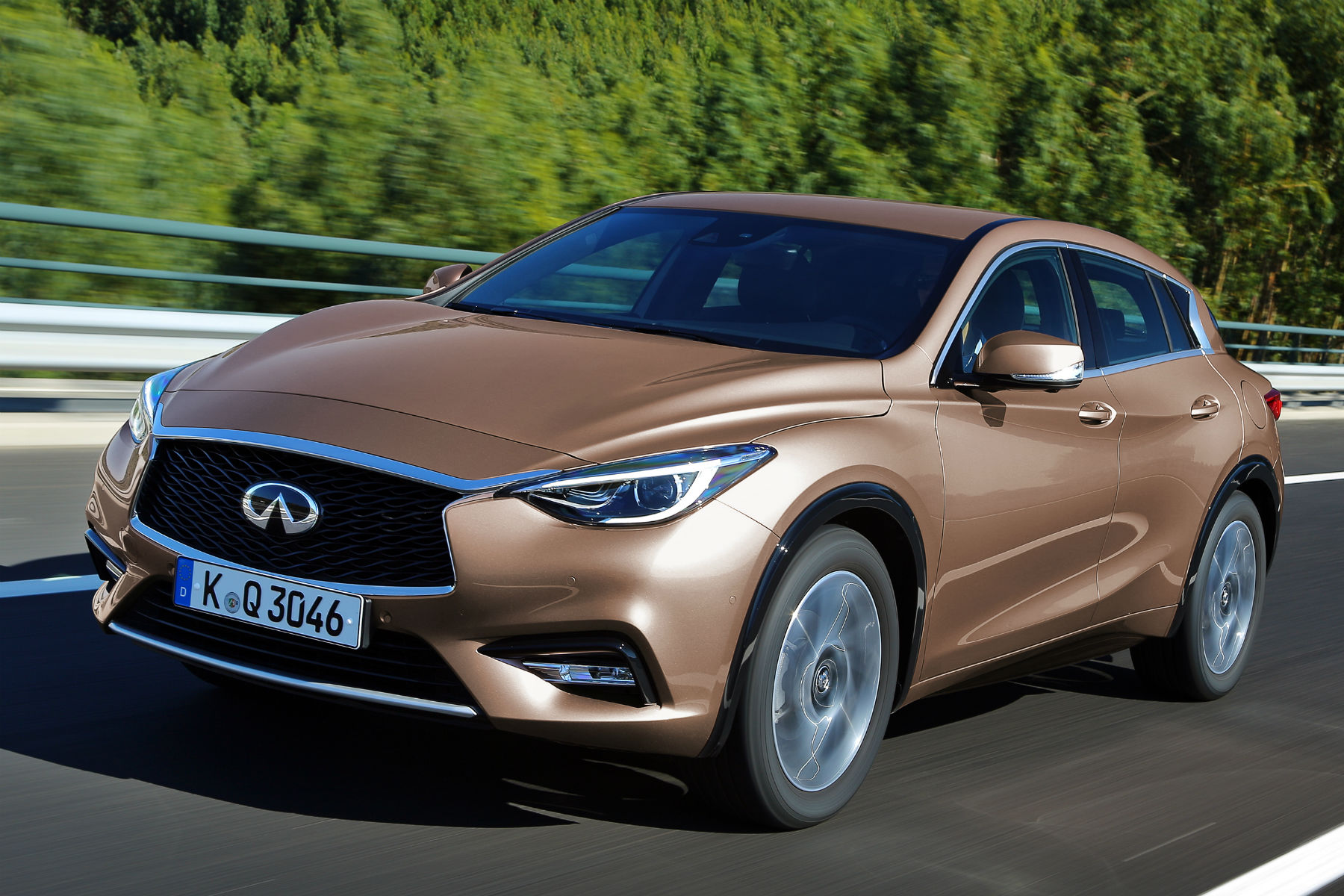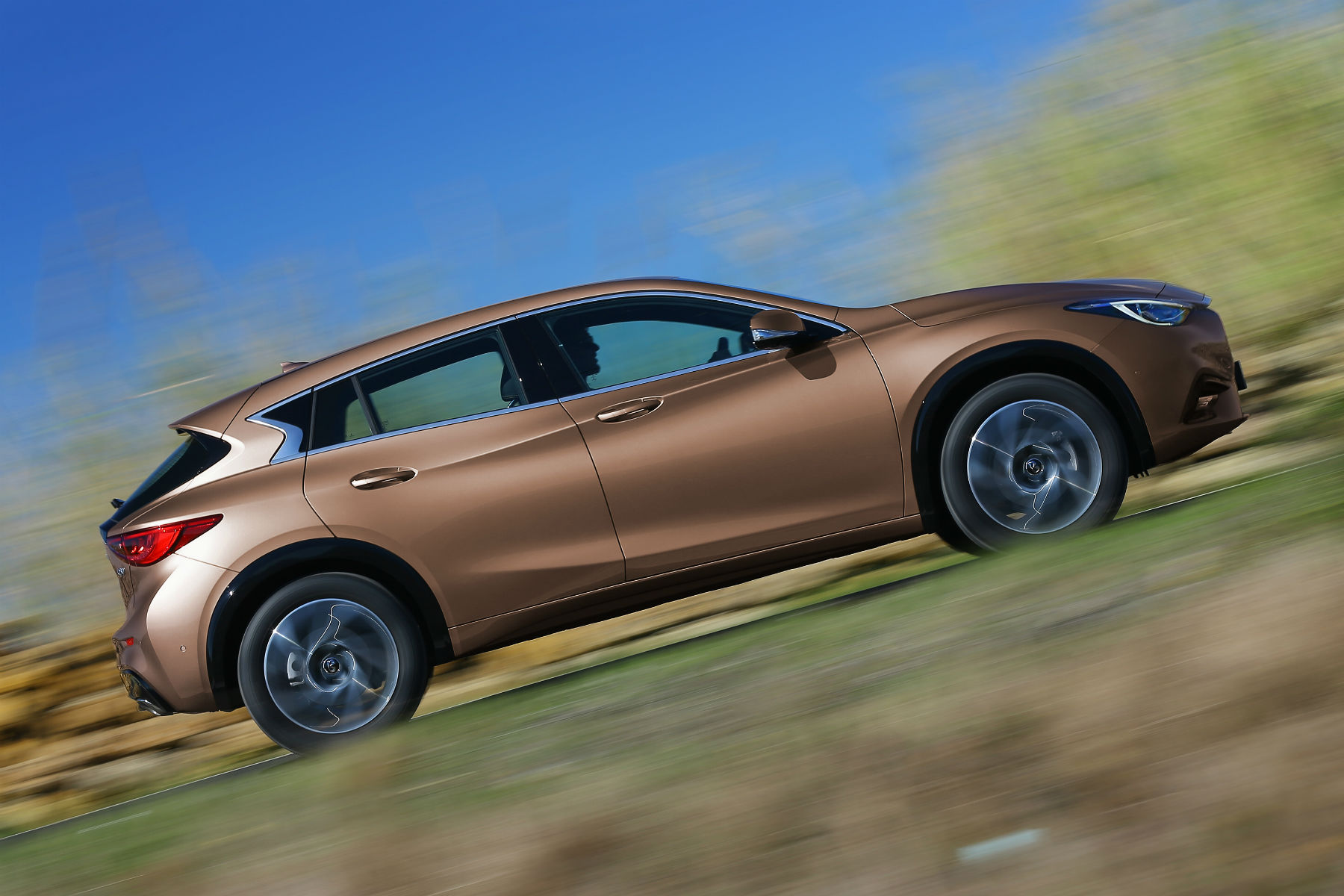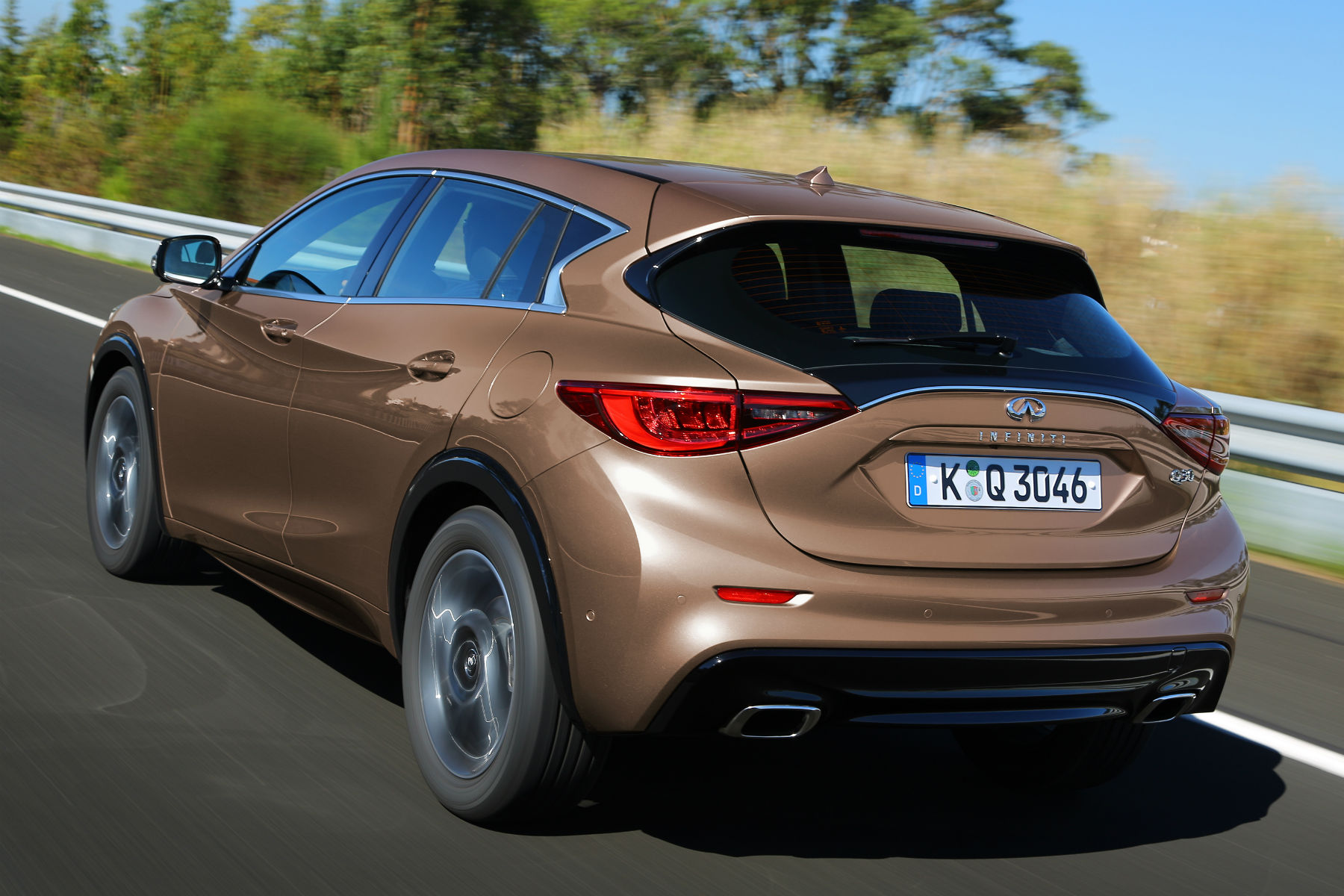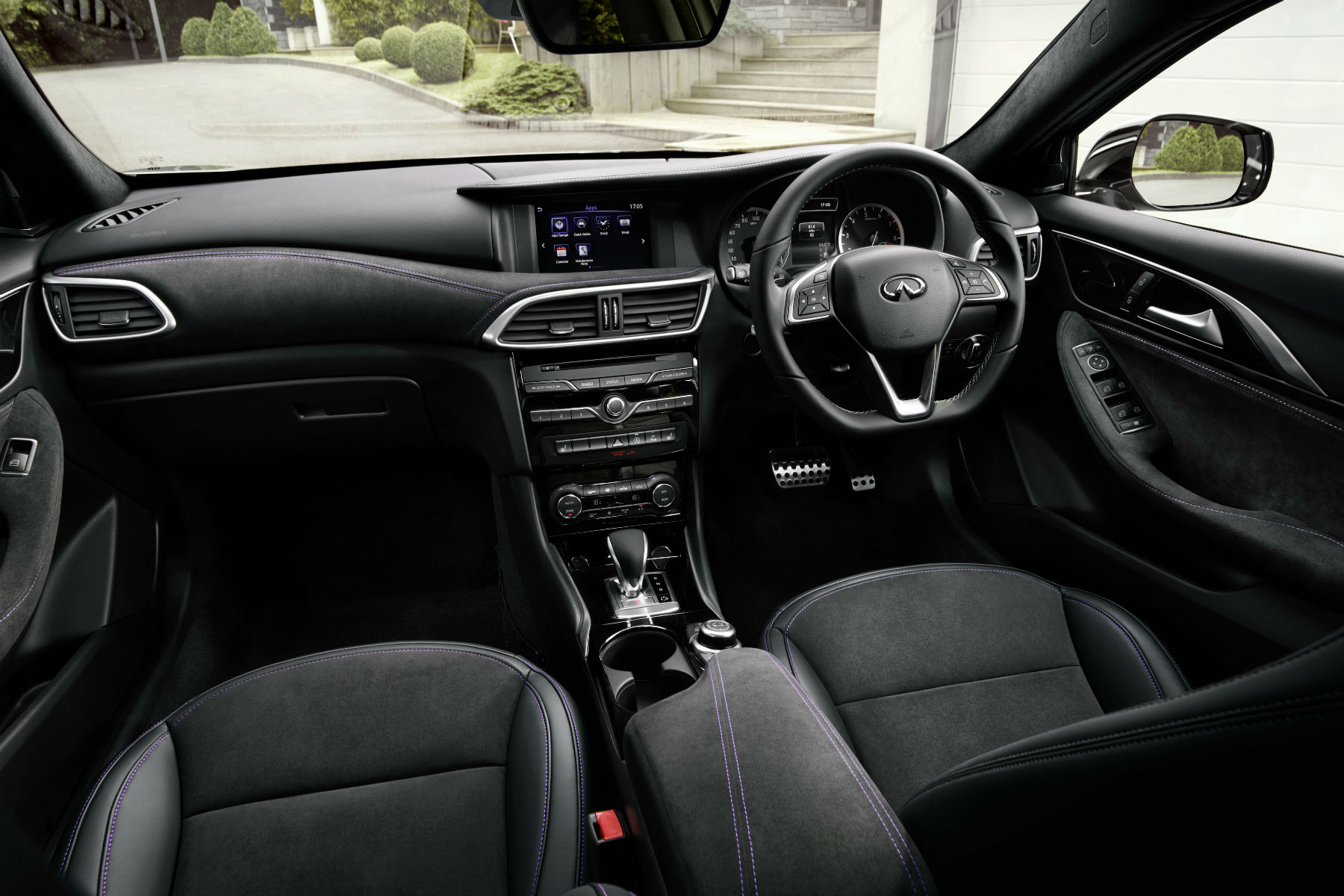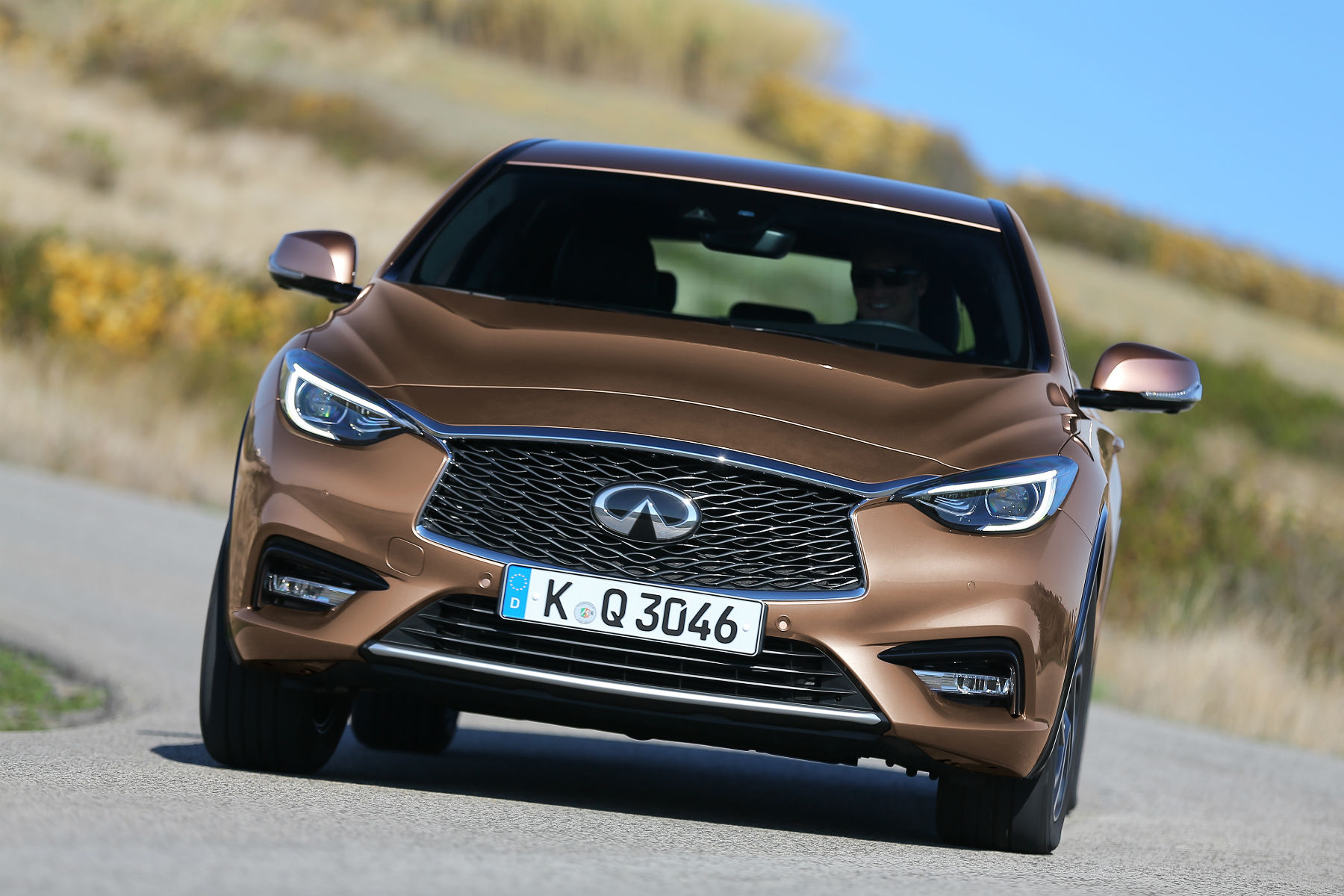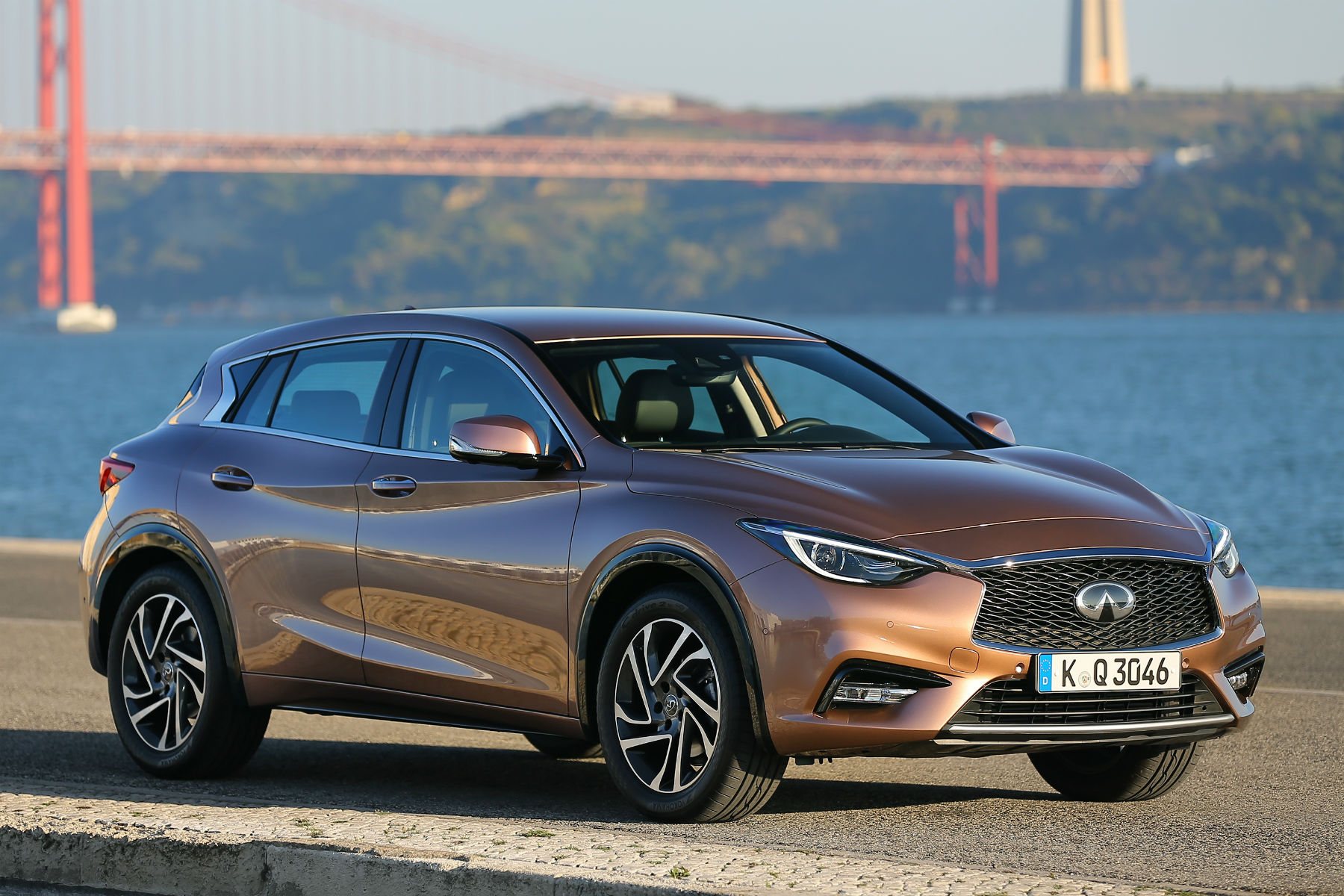If you have a BMW 1 Series, Audi A3 or Mercedes-Benz A-Class on your drive, you’re making a statement. You’re likely to be a young, trendy sort, who cares about appearance but doesn’t need anything bigger than a Ford Focus. You’re probably a company-car driver who wants to pay as little tax as possible, but wants a car that can spend hours on the UK’s crowded motorways without breaking a sweat.
The problem with the three cars mentioned is that the statement they make is being diluted. They’re selling in increasingly larger numbers. Sure, you’re doing alright if you’ve got a BMW 1 Series on your drive, but so is the guy next door. And the lady two doors down…
So if you really want to make a statement, Infiniti is launching its Q30 model. If you’re not aware of Infiniti, it’s Nissan’s premium brand. Don’t recoil in horror – it’s like Lexus is to Toyota, DS is to Citroen and, you could argue, Audi is to Volkswagen.
Infiniti’s slowly gathering momentum in Europe, hence its belated entry into the premium C-segment. But launching an entirely new car under its own steam would take up time Infiniti hasn’t got. So, in a bid to speed up the process, it’s turned to the Renault-Nissan alliance and its deal with Daimler. The result is a car based on the same platform as the Mercedes-Benz A-Class.
However, you would struggle to tell from the outside. It’s been designed by Infiniti’s London-based team, and sits slightly higher than an A-Class. It’s almost going for the crossover market, similar to the Mercedes-Benz GLA and Volvo V40 Cross Country, but the Infiniti QX30, due next year, will be even more rugged.
Infiniti Q30 review: On the road
Most buyers will opt for the 1.5-litre diesel. This is a Renault engine, but appears across a wide range of cars, from the Mercedes-Benz A-Class to the Nissan Qashqai. While it’s hardly a thrilling powertrain, it’ll be quick enough for most buyers and provides enough torque to avoid to excessively working the six-speed manual gearbox.
If you’re after a more powerful diesel, the Mercedes 2.2-litre four-cylinder engine produces 170hp. It’s a rather vocal unit – fine when you’re up to speed (Infiniti has some clever methods to disguise it, including active noise cancellation), but particularly noticeable when you’re driving around town. The Q30’s premium feel is kind of ruined when you set off from traffic lights and the stop/start system triggers the engine with a surprisingly loud clatter.
Infiniti doesn’t expect the 2.0-litre petrol engine to sell in large numbers in the UK, but trying it in the Q30 Sport model we found it to make very little sense. It has sporting pretensions, but in reality squares up against the A200 Sport in Mercedes’ A-Class line-up. That makes it more of a warm hatch than a true hot hatch.
The standard seven-speed dual-clutch transmission is clumsy and fails to compete with the likes of Volkswagen’s DSG ’box during spirited driving. On the motorway, it makes for a satisfactory cruiser, but both wind and tyre noise transfer into the cabin more than you’d expect from a truly premium car.
There’s no denying that the Sport’s four-wheel-drive system means there’s plenty of grip, but you’ll back off far sooner than the car due to the Q30’s awkward body roll. And that’s despite this model sitting 20mm lower than the standard car.
One thing that is fairly pleasing about the Q30 is its steering. It hasn’t inherited the fly-by-wire system of the bigger Q50, instead using more conventional electrically-controlled power steering. While it doesn’t handle as well as the BMW 1 Series, it takes corners in a safe and predictable manner, while providing a reasonable amount of feedback.
Infiniti is particularly proud of the Q30’s suspension, which it says has been tuned at Cranfield with UK roads in mind. It provides a good balance between sportiness and comfort, using a multi-link setup at the rear and a MacPherson struts at the front. You may expect, thanks to the Q30’s raised ride height, that it might ride slightly better than it does – but it’s only marginally better than the A-Class on which it’s based.
Infiniti Q30 review: On the inside
If you’ve driven a Mercedes-Benz A-Class, the Q30’s interior will seem very familiar. That’s not necessarily a bad thing – there’s no denying that it feels premium, with a lot of soft materials and pleasant touches. The manufacturer points to its satin-chrome trim which, unlike plastic, gives a ‘cool-to-touch’ feel as an example of this. While this sounds a little like marketing spiel, it’s true that a degree of attention has been paid to minor details.
Buyers get a choice of interior trim combinations – including ‘cafe teak’, which combines brown and black upholstery with fake wood, and ‘gallery white’, which includes white leather with red stitching. Some of these won’t be to everyone’s tastes but, you might be pleased to know, there is also a more conventional black interior trim. That, however, comes with purple stitching.
Some will be happy to see that Mercedes-Benz’s ‘stuck on’ infotainment screen has been replaced with an integrated unit as standard. It’s smaller, though, taking away from that premium feel.
The seats are more curved than you’d usually find in a car – designed to follow the curvature of the spine and provide more comfort over long distances, says Infiniti. It’s true that we didn’t notice any aches or pains after a couple of hours in the car. Rear legroom is adequate, while bootspace comes in at 368 litres – making it competitive against the likes of the Audi A3 and BMW 1 Series.
Infiniti Q30 review: Running costs
We’ve mentioned that the majority of buyers will opt for the 1.5-litre turbodiesel. This emits 108g/km CO2 and returns 68.9mpg.
In other markets where smaller wheels are available, the same engine has lower emissions and provides better fuel economy. The same engine in other models (including the larger Nissan Qashqai) manages to drop below the 100g/km CO2 barrier. While this will soon no longer have the tax advantages it currently has for private buyers (free vehicle excise duty), 108g/km CO2 will penalise company car drivers. Why would you choose one as your company car when the equivalent A-Class will cost you less in tax?
The other concern many will have is the Infiniti’s residual values. The brand doesn’t carry the same cachet as rivals, so surely it’ll be worth less and harder to sell a few years down the line. Infiniti is very defensive of this, citing a 39% retained value after three years and 60,000 miles according to experts CAP.
Infiniti Q30 review: Verdict
Infiniti faces a challenge with its Q30. It needs to offer a really good reason to tempt buyers away from their BMWs and Audis, and into an unknown quantity.
You could argue that, by using a Mercedes-Benz platform, Infiniti has played it safe. It’s true that the Q30 is largely inoffensive and doesn’t do anything particularly badly. But it doesn’t do anything particularly well, either. Not well enough to tempt you from the German brands that will continue to dominate this sector, anyway.
You’re making a very bold statement buying a Q30. You’re telling the world that you don’t want a Audi A3, BMW 1 Series or Mercedes-Benz A-Class. But what you get is essentially the latter, which makes buying one just a little bit pointless. If you’re absolutely sold on buying a Q30 for whatever reason, opt for the 1.5-litre diesel. You’ll be treated to a perfectly serviceable car – but don’t expect anything particularly special.
Infiniti Q30 review: Specifications
Price: £20,550 – £34,890
Power: 109 – 211hp
Torque: 148 – 258 lb ft
0-62mph: 7.2 – 12 seconds
Top speed: 146mph
Fuel economy: 42.2 – 68.9mpg
CO2 emissions: 108 – 156g/km
